

 The Accurate Reloading Forums
The Accurate Reloading Forums  THE ACCURATE RELOADING.COM FORUMS
THE ACCURATE RELOADING.COM FORUMS  Guns, Politics, Gunsmithing & Reloading
Guns, Politics, Gunsmithing & Reloading  Military & Military Surplus
Military & Military Surplus  Some pictures of our trip to Verdun and Somme
Some pictures of our trip to Verdun and SommeGo  | New  | Find  | Notify  | Tools  | Reply  |  |
| One of Us |
From 15 to 29 May 2008, my wife and I toured France and Belgium visiting World War I and World War II battlefields, monuments and cemeteries. I was a trip I have wanted to make for a couple of years having studied and read about these battles. I was knowledgeable, but totally unprepared for the breadth and yet smallness of these battlefields. This sounds like an oxymoron, but what I mean is that these battlefields were gigantic laterally running from the Alps to the Channel, but very shallow in depth. For example, one of the first sites we visited was Beaumont-Hamel and the New Foundland Memorial. In this area, the opposing trench lines were maybe 300 yards apart. Compared with Gettysburg, for example, the opposing armies were in one another’s haversacks. We started our visit in Metz from where we toured the areas around the city that were important to our taking the city in WWII, Maginot Line of WWII which was important in the early months of WWII, and the Verdun Battlefield which stretched from the German-French border down towards Paris with Metz on the right flank of the salient. It was interesting to see how fortified defensive position (forts) came and went and came in military thinking, and it was sobering to see battlefields nearly one hundred years old with the moldering shell holes and old trench lines. The immensity of the conflict and of the death and suffering is almost too much to grasp.  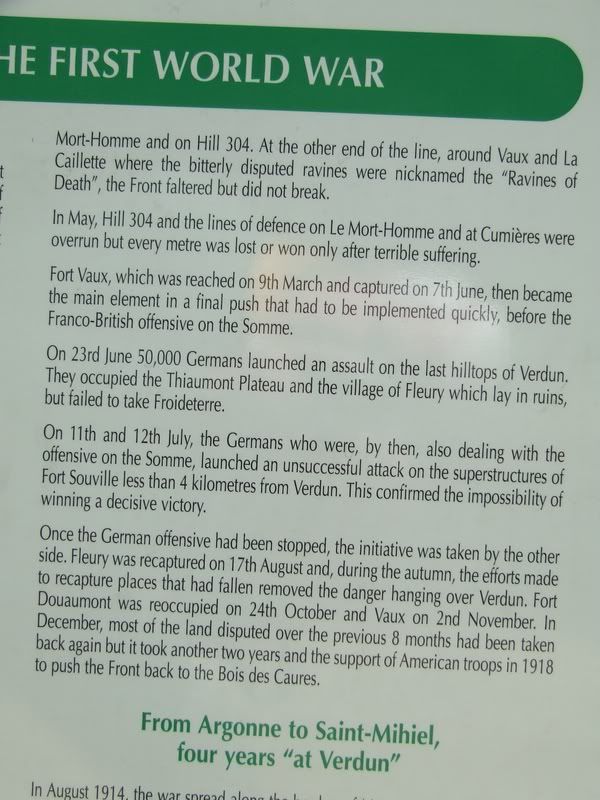 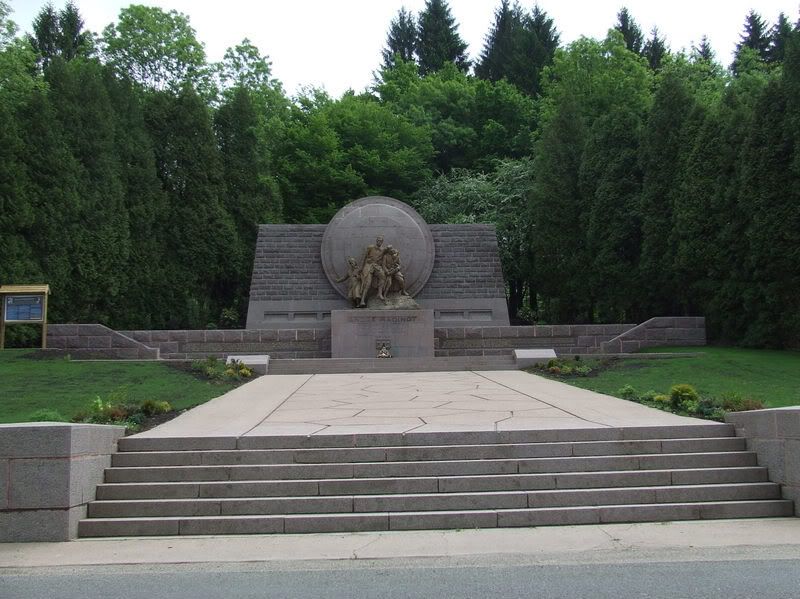 We stopped at the monument to the US troops who fought in this sector, which was there most active sector, and at the American Cemetery at Ardennes (funny how these names keep cropping up!) Unfortunately, I have not uploaded my video camera take which I used there. 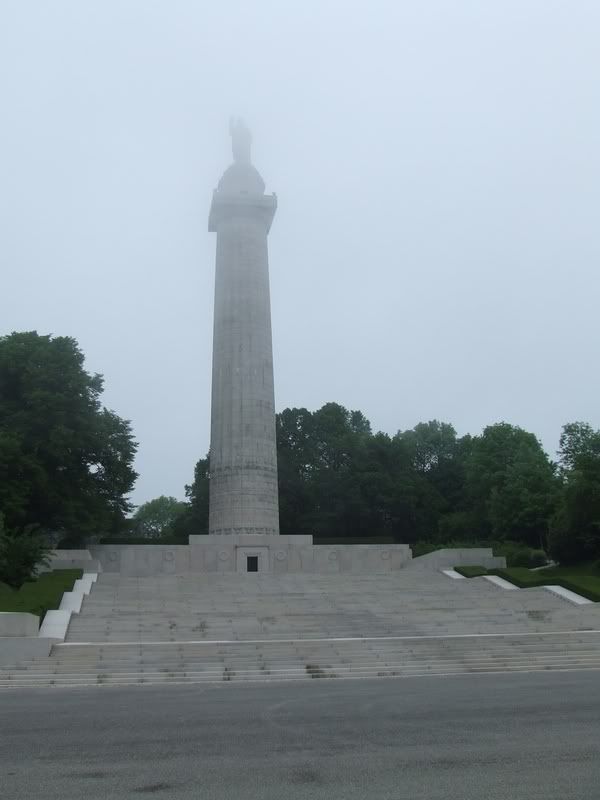 We also stopped at the Memorial of Bayonettes which was built by an American benefactor to honor our French allies, who ready to go over the top, were buried in place by a huge explosions with only their bayonettes sticking up above the surface. (Thinking today is that they (1) had put their weapons down when they bugged out in a gas attack, or (2) they were all gassed getting ready to go over the top and were subsequently buried by shelling.  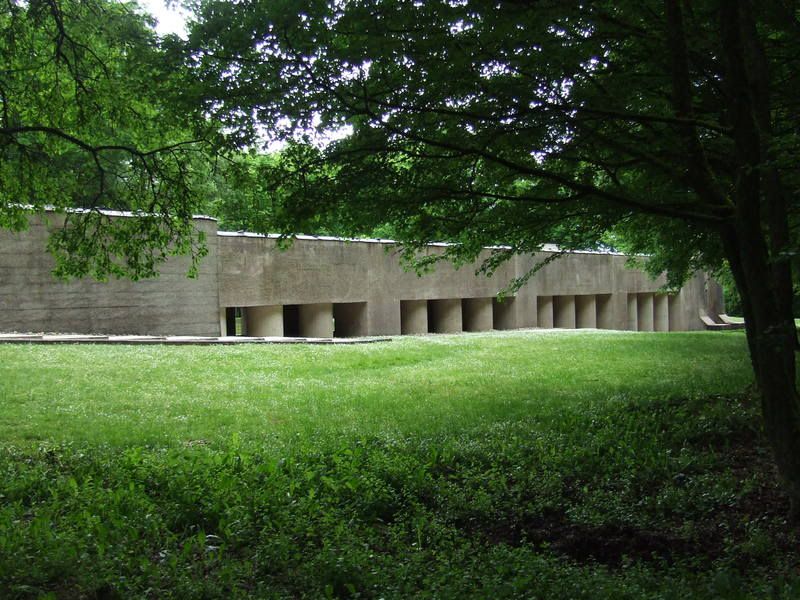 All that could be seen when the site was first discovered was a line of French bayonettes sticking up above the trench line. Today all you can see are the stubs of the bayonettes which were vandalized.  The Somme We went from there to the Somme. The Commonwealth forces were deployed in this area, and, in order to help take the pressure off the French fighting to prevent the Germans from breaking through to Paris, they were ordered to attach the Germans in an all out effort along their entire front. The CG demurred stating that his troops were not trained well enough and needed more time; however, the French General pointed out that there was no time and if they did not attack, there would be no French Army. The topo map here lays out the major towns and objectives in this battle which began on July 1, 1916, the worst day in the history of the British Army. The British CG went forward, but kept his attack plan dirt simple – hi diddle diddle, right up the middle attacking along the road running from Albert to Bapaume, a D+1 objective. They planned to shell a lot (the biggest barrage ever fired) but because they still were new to the war, about one-third of their shells were duds and they did not have any really heavy guns. In addition, they intended to use mines placed by tunneling under the German lines to be exploded 30 minutes knock out key command and control sites prior to the attack. 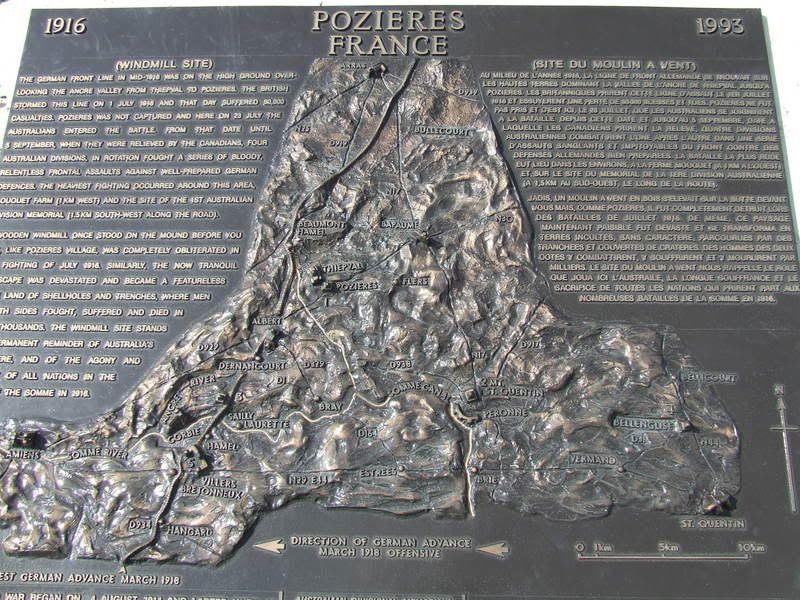 The mines went off and were destructive; however, it alerted the Germans. When the barrage lifted the Germans came out of their bunkers, manned their machine guns, and mowed the attacking troops down. The Brits lost 60,000 casualties on day one, with about a quarter KIA. What followed over the next three months was some of the bloodiest fighting ever recorded. By the end of the battle, the Brits and their Commonwealth allies had suffered about 2.5 million casualties reaching just beyond their D+1 objectives. Our tour began and Beaumont – Hamel where the New Foundland Division was deployed. The lead units went over the top into a maelstrom of machine gun fire and soon the trench lines going to the front were clogged with wounded and dying men. When the initial Bde was halted, the reserves were committed. The young men could not fight their way through the trenches, and decided to climb out of the trenches and try to move forward. The German slaughtered them too.  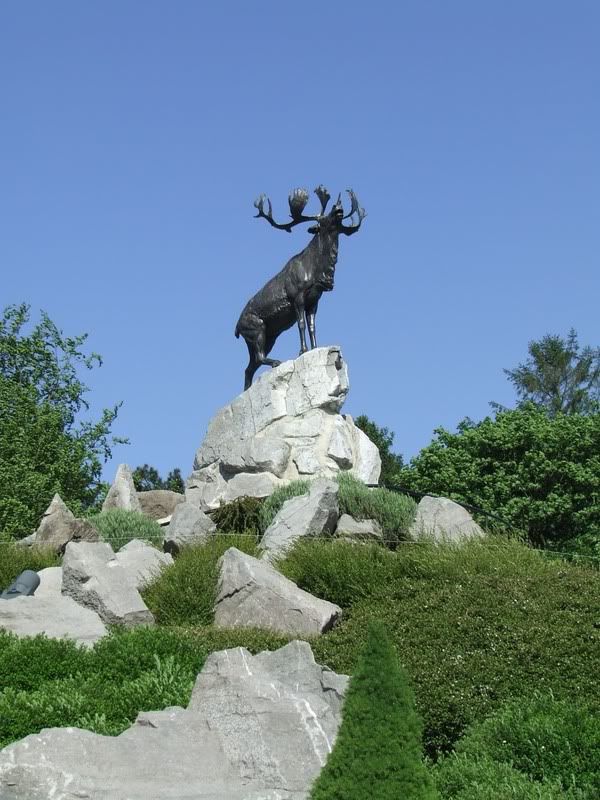 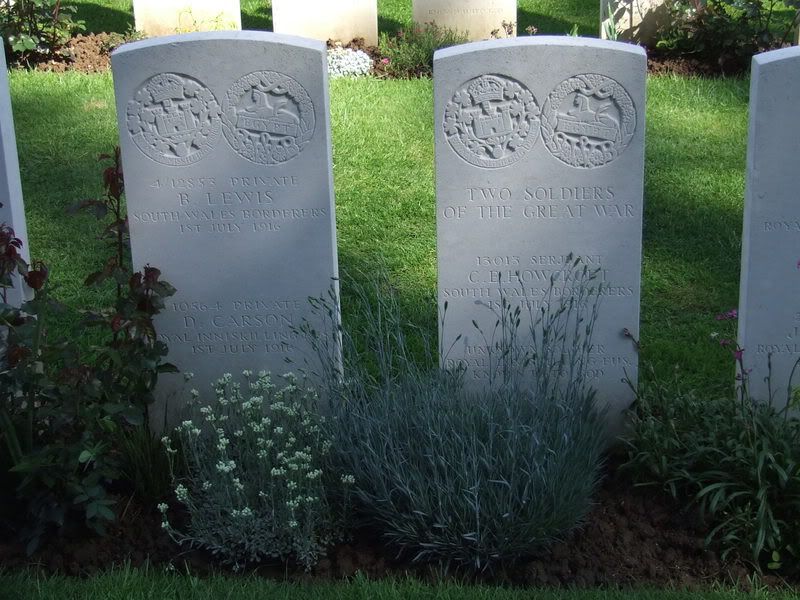 These New Foundlanders were Pal Battalions, groups formed from towns and villages with the idea that they could serve together and build esprit de corp. No one considered what would happened with the casualty reports began. Here are some of the headstones in the cemetery near this sector.  After the Pal Battalions had their go at it, the regular also got into the fray. The Blackwatch was a famous regular army unit that also paid in blood that July 1st morning along with the Ulsterman. 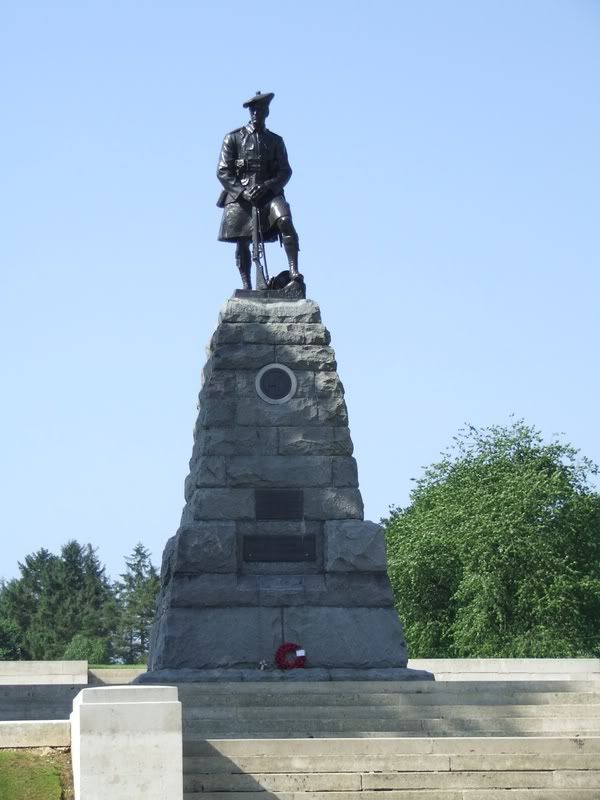 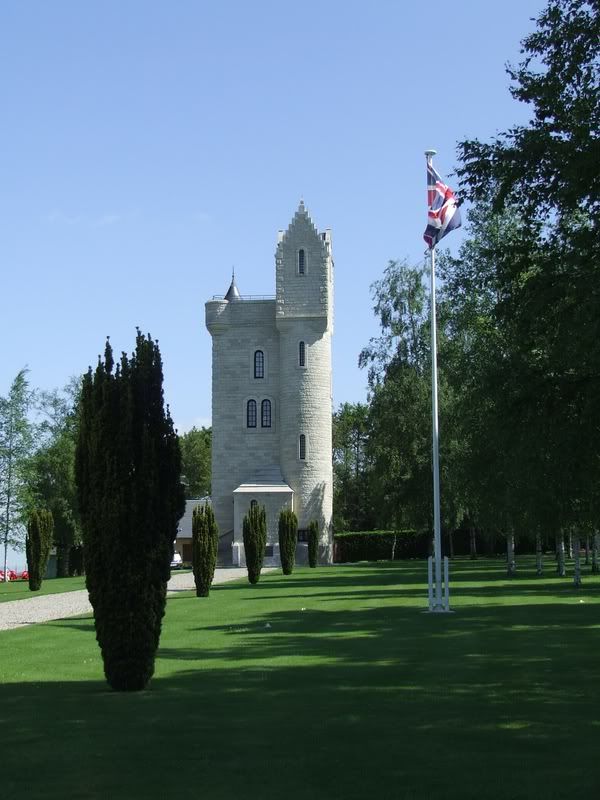 John McCrae, a frontline surgeon,after loosing a good friend, he pinned the famous poem, In Flander’s Fields. He later died from pneumonia possibly a victim of the Influenza Epidemic of 1918-20. This occurred in the area around Ypres. 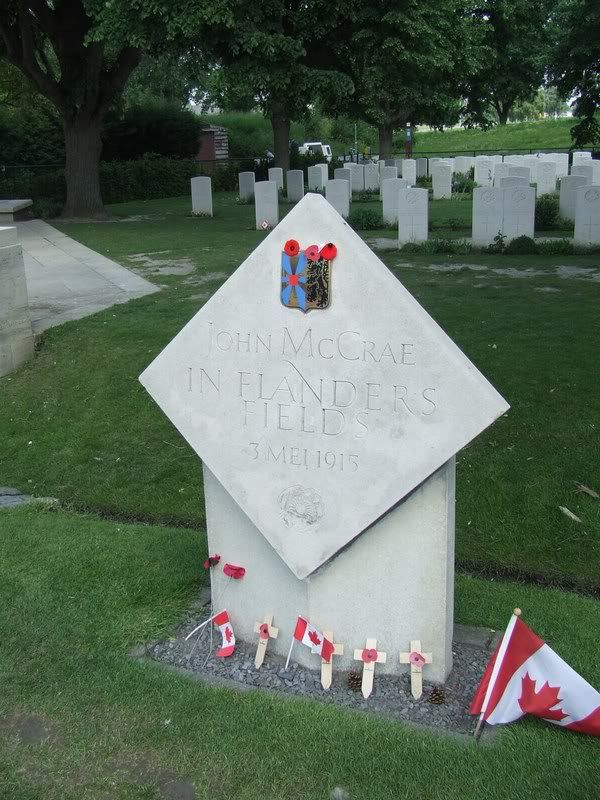 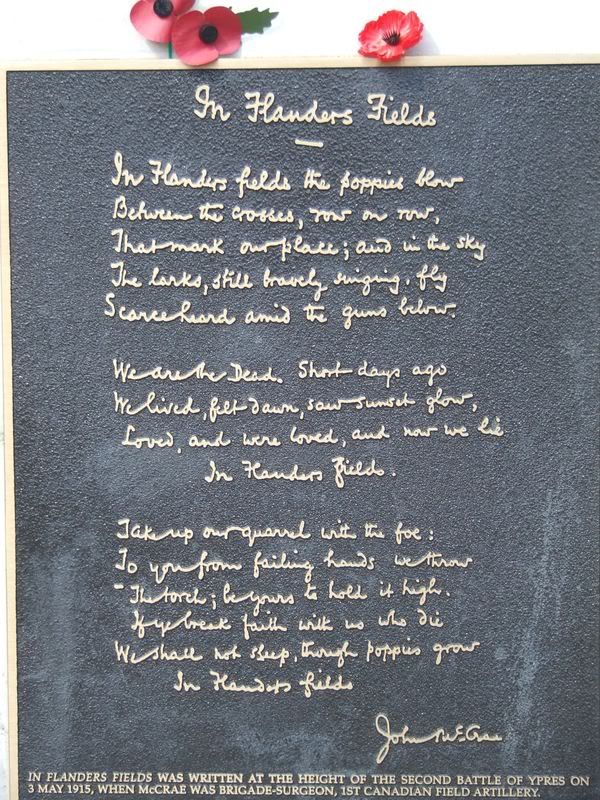 Many underage young men caught up in the patriotic frenzy at the first of the war, lied about the age to serve. In this cemetery is buried this fifteen year old boy. Maxim gunners did not check ID’s. 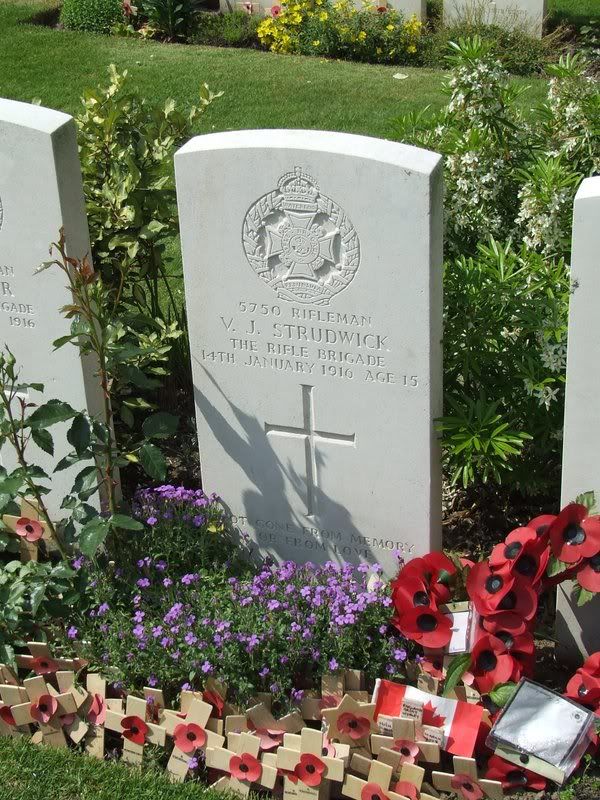 And this young man who won the Victoria Cross. 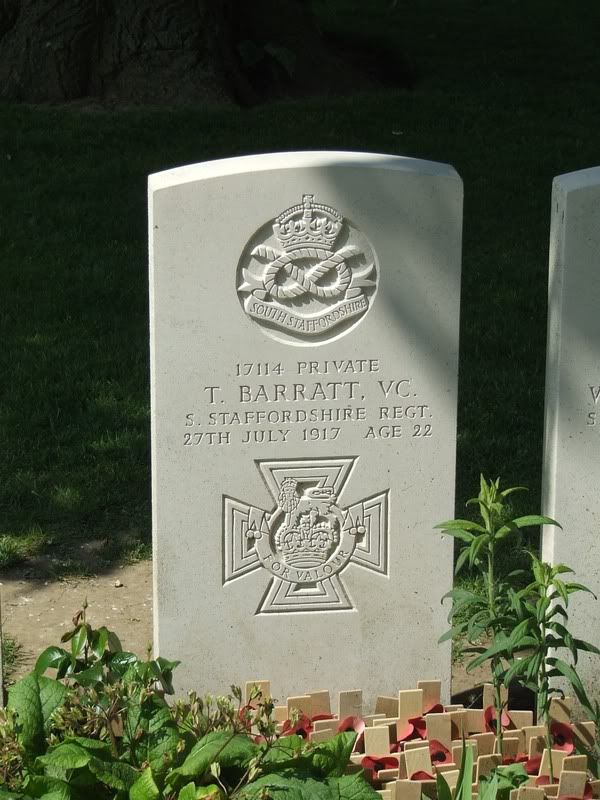 The dying wasn’t all one sided. This marker in a German cemetery states that in four communal graves rest 11,970 German soldiers, 6,477 of whom remain unidentified. 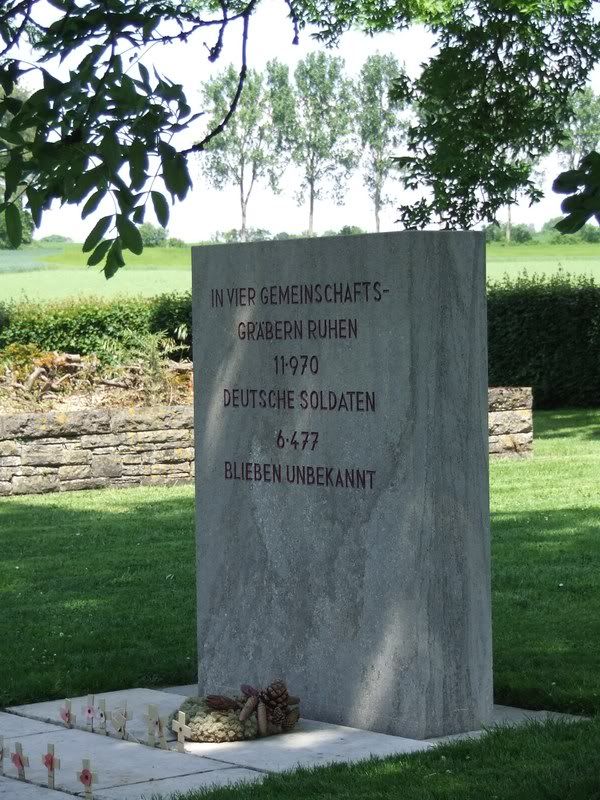 The cemetery, according to this marker, was the final resting place of 17,027 German soldiers.  The soldiers of the Commonwealth fought and died here to. The following are memorials to the New Zealanders who were MIA; the South Africans who fought at Bois Beauville; and the Canadians. 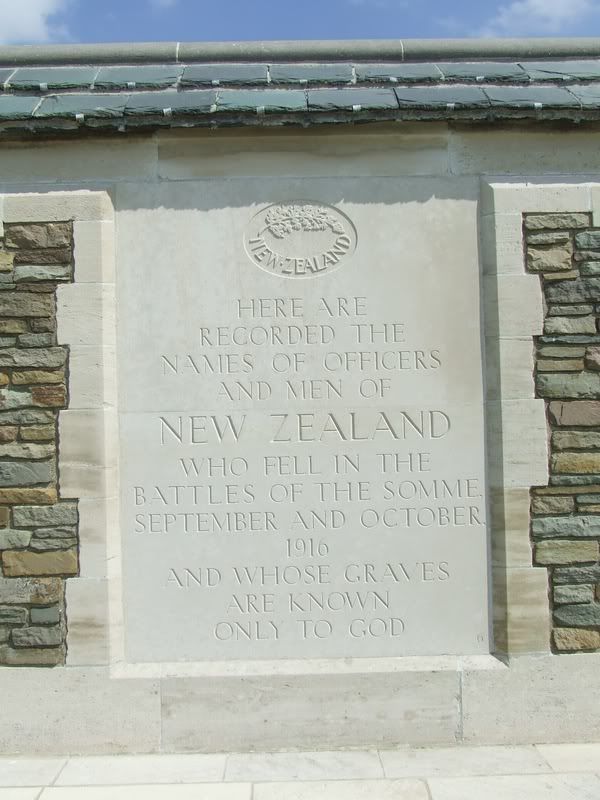  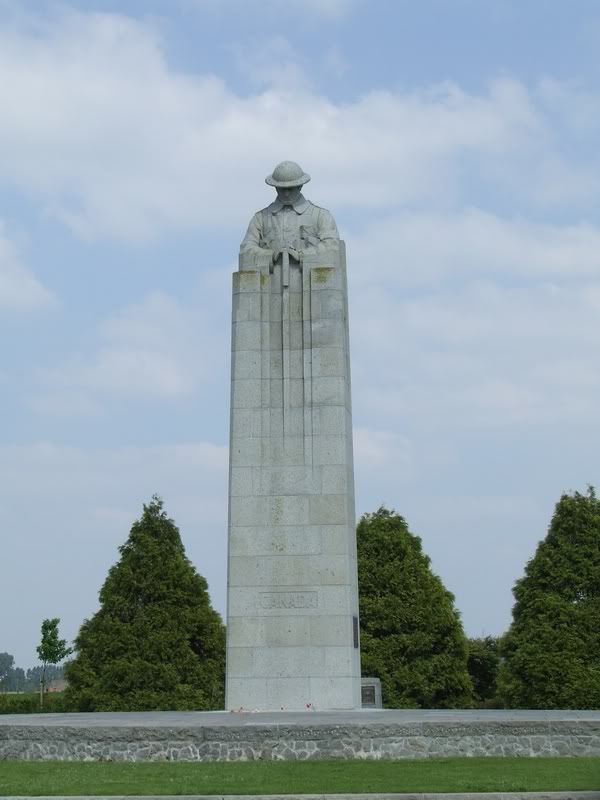 This is a picture of the grave from which the New Zealand Unknown Soldier was chosen. 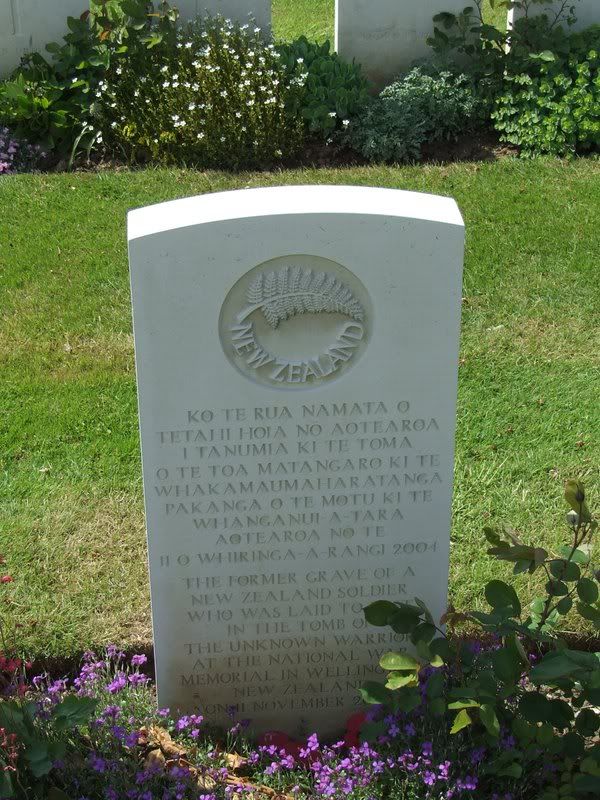 Here are some pictures of the monument at Longueval remembering the first battle in which tanks were employed. Note the second picture, a close up of one of the small tanks hit by a 50 caliber bullet in a strafing attack on a German column in WWII.   Final Thoughts One sees all of the headstones, (two Brits beneath each stone and four to six German beneath their crosses) and American crosses (each American or “Sammie†as the French called us, got his own), and you wonder what was it about. Then as we were driving from Verdun to Somme we drove for a while along the Somme River. It was a Sunday afternoon, and a lovely day. Everyone was out, and rowing up the river in a scull were two young women. For me that answered the question. Those young men so long ago now laid down their lives so that those young women could row up that river in peace. I know, I’ve soldiered and know that you do it for you foxhole buddy, but that image balances for me their sacrifice. Unfortunately, it would take WWII, the second half of the conflict begun in 1914 to resolve the matter, but it seems settled now. I’ll post my pictures of Normandy later. Kudude | ||
|
| One of Us |
Good post ! I will be looking forward to your Normady post. thanks, dxr Happiness is a tight group | |||
|
| One of Us |
I´ve long wanted to do that tour myself. Thank you so much for posting your experience here. boet | |||
|
| One of Us |
Thank you for your post and the beautiful photos. You obviously have researched the battle very well. Perhaps, one day, I will be able to tour my battlefields in Vietnam like you did at Verdun and Somme. They haunt me still. Namibiahunter  . | |||
|
| one of us |
Good report. I was particularly interested to see the grave of John Mc Crae, a Candian icon. The scale of those monuments is a Wonder in itself. Grizz Indeed, no human being has yet lived under conditions which, considering the prevailing climates of the past, can be regarded as normal. John E Pfeiffer, The Emergence of Man Those who can't skin, can hold a leg. Abraham Lincoln Only one war at a time. Abe Again. | |||
|
One of Us |
Thanks for posting. My great grandfather and great-great uncle both served on the U.S. side of WW1. Another great grandfather served on the German side. Much of that history (WW1) is now forgotten or, at least, not widely talked about. Thanks. ----------------------------------------------------- Do not answer a fool according to his folly, or you yourself will be just like him. Proverbs 26-4 National Rifle Association Life Member | |||
|
| One of Us |
Thanks for the pictures. That is sobering. | |||
|
| one of us |
Verdun is about 5 hours from where we live. My great-grandfather was there, too, as an artillery officer. Otherwise most likely he would not have survived. I need to go there one day to show my children, they do need to learn a little about war, not only from movies and PC games. Very good reading on his subject is Ernst Juengers's "Storms of Steel" and Erich Maria Remarque's "No News on the Western Front". | |||
|
one of us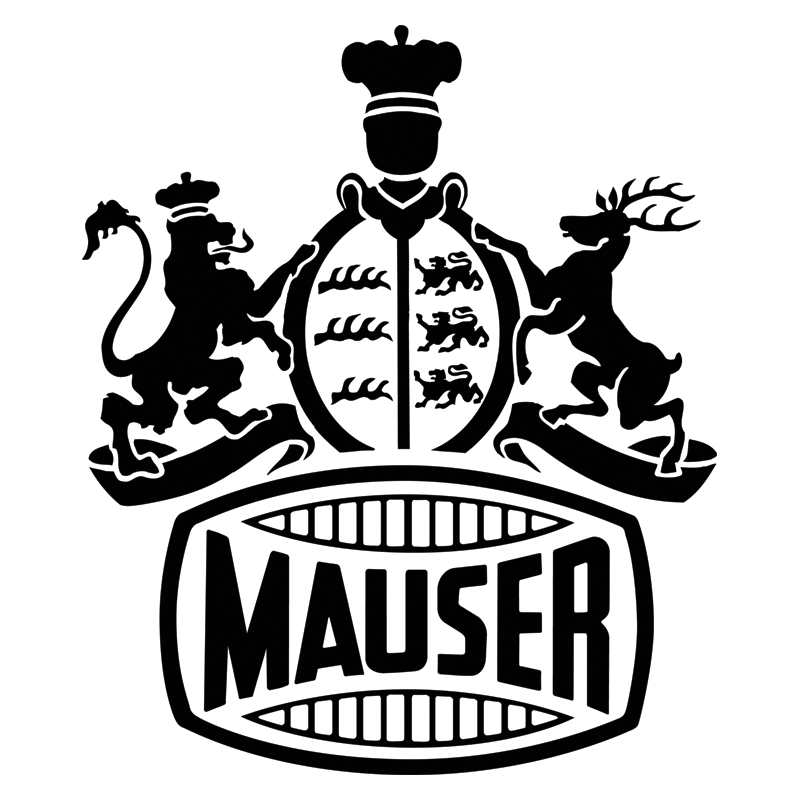 |
Excellent post. NRA Life Member, Band of Bubbas Charter Member, PGCA, DRSS. Shoot & hunt with vintage classics. | |||
|
| one of us |
Thank you. My Grandfather was there, and lived for many years after, but never would talk about it. I would like to see the WW1 & WW2 battlefields, and take my daughter with me. Lt. Robert J. Dole, 10th Mountain, Italy. | |||
|
| one of us |
The sun shining down on these green fields of France The warm wind blows gently and the red poppies dance The trenches have vanished long under the plow No gas, no barbed wire, no guns firing now But here in this graveyard that's still no mans land The countless white crosses in mute witness stand To man's blind indifference to his fellow man And a whole generation were butchered and damned Did they beat the drums slowly Did they play the fife lowly Did they sound the death march as they lowered you down Did the band play the last post and chorus Did the pipes play the flowers of the forest And I can't help but wonder oh Willy McBride Do all those who lie here know why they died Did you really believe them when they told you the cause Did you really believe that this war would end wars Well the suffering, the sorrow, the glory, the shame The killing and dying it was all done in vain Oh Willy McBride it all happened again And again, and again, and again, and again *We Band of 45-70er's* "Far better it is to dare mighty things, to win glorious triumphs even though checkered by failure, than to rank with those poor spirits who neither enjoy nor suffer much because they live in the gray twilight that knows neither victory nor defeat." -Theodore Roosevelt- | |||
|
| one of us |
"I Have a Rendezvous with Death" I HAVE a rendezvous with Death At some disputed barricade, When Spring comes back with rustling shade And apple-blossoms fill the air— I have a rendezvous with Death When Spring brings back blue days and fair. It may be he shall take my hand And lead me into his dark land And close my eyes and quench my breath— It may be I shall pass him still. I have a rendezvous with Death On some scarred slope of battered hill, When Spring comes round again this year And the first meadow-flowers appear. God knows 'twere better to be deep Pillowed in silk and scented down, Where love throbs out in blissful sleep, Pulse nigh to pulse, and breath to breath, Where hushed awakenings are dear... But I've a rendezvous with Death At midnight in some flaming town, When Spring trips north again this year, And I to my pledged word am true, I shall not fail that rendezvous Alan Seeger. 1888–1916 | |||
|
| Powered by Social Strata |
| Please Wait. Your request is being processed... |
|
 The Accurate Reloading Forums
The Accurate Reloading Forums  THE ACCURATE RELOADING.COM FORUMS
THE ACCURATE RELOADING.COM FORUMS  Guns, Politics, Gunsmithing & Reloading
Guns, Politics, Gunsmithing & Reloading  Military & Military Surplus
Military & Military Surplus  Some pictures of our trip to Verdun and Somme
Some pictures of our trip to Verdun and Somme

Visit our on-line store for AR Memorabilia

